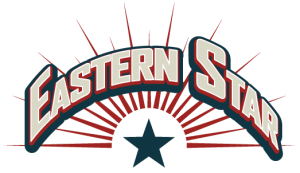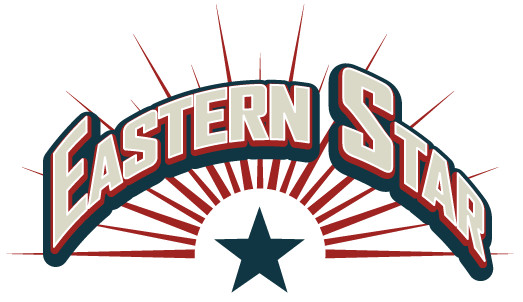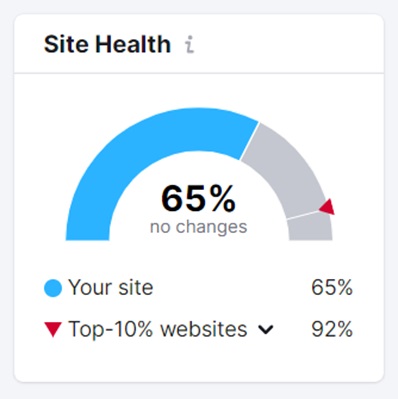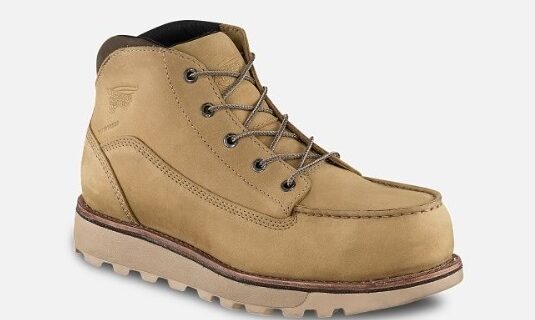
You can spend days (or weeks) optimizing your site for SEO performance, but today we’re going to discuss how to get started. What is the low hanging fruit, and when can you put that effort on hold to focus elsewhere. We’re going to use SEMRush as our research tool and we’re going to outline the basics of getting a site as close to the Site Health goal as possible.
Your optimization can’t happen without some idea of the keywords you’re looking to rank for. If you haven’t done keyword research yet, you can get a feel for the process by reading the keyword research article. Remember, they need to be both: appropriate for your business and website and achievable. If you sell boots, you probably can’t rank for the keyword ‘boots’. Find longer keywords that exactly match what you offer.
Next, let’s check Site Health. This will give you an idea of how well your site performs against Google best practices. Unlike the moving target that your competitors present, Site Health is a measure of how many issues exist on the site today. By fixing Site Health errors and warnings, you repair the foundation on which your site is built…and you’re setting the stage for better rankings.
Let’s say your site scores 65 out of 100. You have some work to do, but you’re in good shape. By pulling the Errors and Warnings report, you can see exactly what needs work. In this example, there is duplicate content, missing content and some tasks that require some development help. For example, you probably can’t fix ‘broken internal JavaScript’ errors by yourself. That may be a dead end depending on how much web development support you have. If you can’t fix something, move on to the next task. As you clear errors from the site, your Site Health will improve.
Content
Let’s say you’ve cleared 1,000 errors and 5,000 warnings from the site. You’re in really good shape and your Site Health score is improving. Now you need to improve the content. There is both user facing and non-using facing content to address. Let’s say this page has the following title and first paragraph:
Traction Tred Lite
This lightweight, slip-resistant, modern-looking chukka provides superior stability, superb underfoot feel and all-day comfort for a variety of medium-duty work. Advanced waterproofing on the leather upper helps to keep the feet dry and comfortable…
There is nothing incorrect in the text, but you’ll notice at no point do they say, ‘lightweight leather work boot’, which is more likely to bring in new users than the phrase, ‘traction tred lite’. Here is an edit that could help rankings:
Traction Tred Lite | Lightweight Leather Work Boot
This lightweight leather work boot is slip-resistant and modern with superior stability, superb underfoot feel and all-day comfort for a variety of medium-duty work.
The paragraph can continue to describe the boots, but the main keyword, ‘lightweight leather work boot’ now appears in both fields. This content can also be used in the ‘behind the scenes’ content like meta data. By optimizing each page for one specific keyword, you increase the SEO value of that page and lift the site as a whole.
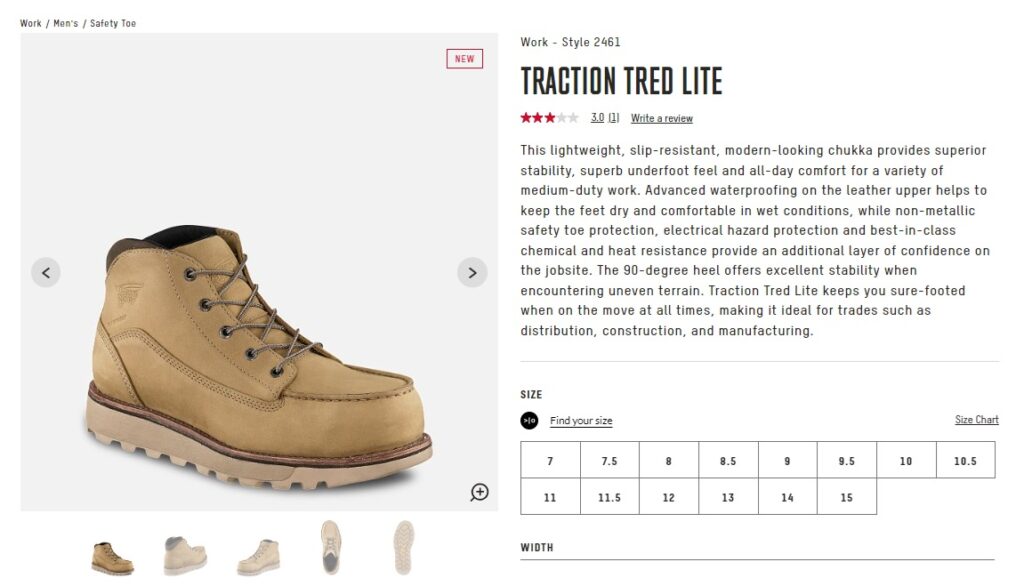
There is plenty more to discuss in terms of SEO optimization, but this gives you an example of how to tackle technical SEO tasks (like the ones from SEMRush) and how to work on the content of each page. Hopefully this helps you understand when (and how) to optimize your site for SEO. If you have questions along the way, feel free to get in touch. We’re ready to start a conversation about where your site is today, and where you’d like it to be.
